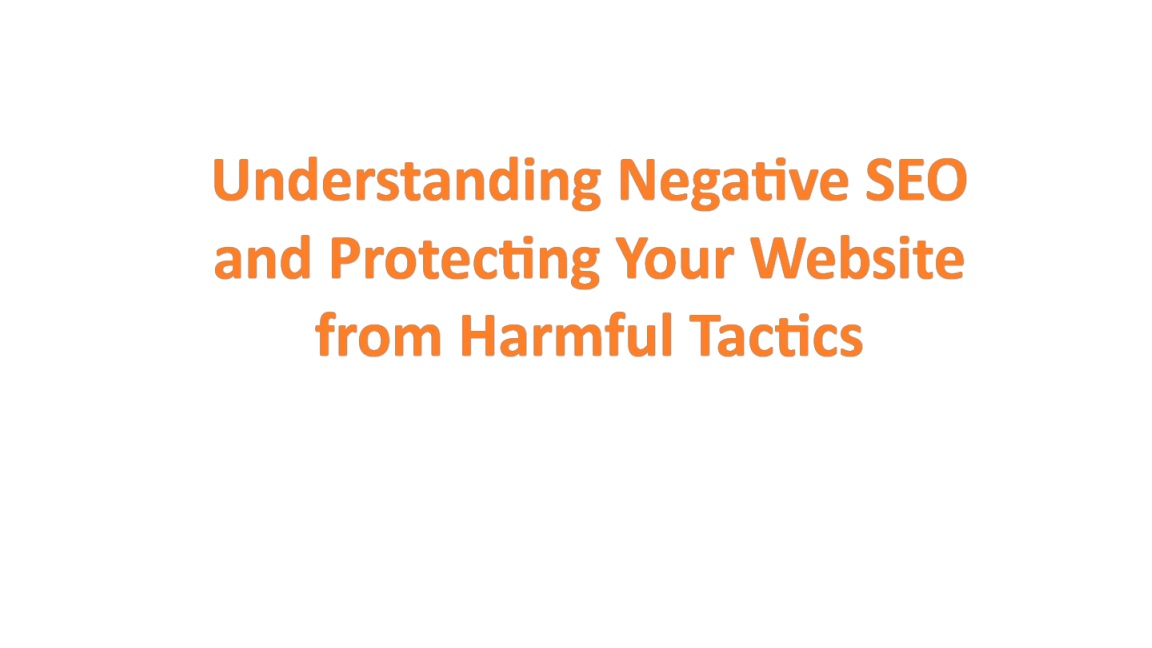In the realm of search engine optimization (SEO), there is a dark side known as negative SEO. Negative SEO refers to malicious practices aimed at harming a website’s search engine rankings. This unethical approach involves targeting a competitor’s website to hinder its performance in search engine results pages (SERPs). In this article, we will delve into what negative SEO entails and explore methods to protect your website from such harmful tactics.

What is Negative SEO?
Negative SEO is a deliberate attempt to manipulate a website’s search engine rankings by using unethical tactics. These tactics can include creating spammy backlinks, duplicating content, hacking websites, distributing malware, and more. The objective is to undermine a competitor’s website, causing it to drop in SERPs or even face potential penalties from search engines.
Identifying Negative SEO:
Detecting negative SEO can be challenging as it often involves subtle tactics aimed at manipulating search engines’ algorithms. Nevertheless, there are certain cautionary indicators to be mindful of:
- Sudden Drop in Rankings: If your website experiences an unexpected and significant drop in search engine rankings, it could be a sign of negative SEO activity.
- Unusual Backlink Profiles: Keep an eye on your backlink profile and look for an influx of low-quality or spammy links. Unnatural link patterns or a sudden increase in backlinks from irrelevant or questionable sources may indicate negative SEO.
- Duplicate Content: If your website’s content is replicated elsewhere on the internet, it could negatively impact your search rankings. Monitor for duplicate content issues through tools like Copyscape or Google Alerts.
- Unexplained Website Issues: If your website faces unexplained technical issues, such as slow loading times, frequent downtime, or sudden changes in design or layout, it could potentially be a result of negative SEO attempts.
Protecting Your Website from Negative SEO:
- Regularly Monitor Your Website:
Keep a close eye on your website’s performance, rankings, and backlinks. Utilize tools such as Google Analytics, Google Search Console, and backlink analysis tools to regularly track changes and potential negative SEO attacks. - Conduct Backlink Audits:
Perform regular backlink audits to identify any suspicious links pointing to your website. Use tools like Ahrefs, Majestic, or SEMrush to analyze your backlink profile and identify toxic or spammy links. Once identified, take necessary steps to disavow or remove such links. - Strengthen Your Website Security:
Enhance your website’s security measures to minimize the risk of hacking or phishing attacks. Regularly update your Content Management System (CMS), plugins, and themes to ensure they are up to date and secure from vulnerabilities. - Enable Email Notifications:
Set up email notifications in Google Search Console to receive alerts about unusual website behaviour or manual penalties imposed by search engines. - Protect Best Backlinks:
Identify and prioritize your best backlinks. Monitor them closely and proactively build new high-quality backlinks to maintain a strong link profile. This strategy will help counterbalance any negative impact caused by potential spammy links. - Address Duplicate Content Issues:
Regularly scan the internet for duplicate content related to your website. If you find any instances, reach out to the webmasters requesting removal or contact search engines directly using their copyright infringement reporting tools. - Monitor Online Reputation:
Be proactive in monitoring your online reputation and promptly address any negative reviews, false information, or malicious content. Utilize online reputation management tools to stay informed and maintain a positive digital image.
In the ever-evolving world of SEO, protecting your website from negative SEO is crucial to maintain and enhance your online visibility. Understanding the tactics used in negative SEO and regularly monitoring your website’s performance, rankings, backlinks, and content will help you identify and tackle any potential threats.
By implementing security measures, conducting backlink audits, protecting your best backlinks, and addressing any duplicate content issues, you can safeguard your website’s reputation and ensure it remains immune to harmful practices. Remember, proactive monitoring, regular audits, and swift action are the keys to defending your website against negative SEO attacks.
Discover more from TechResider Submit AI Tool
Subscribe to get the latest posts sent to your email.
